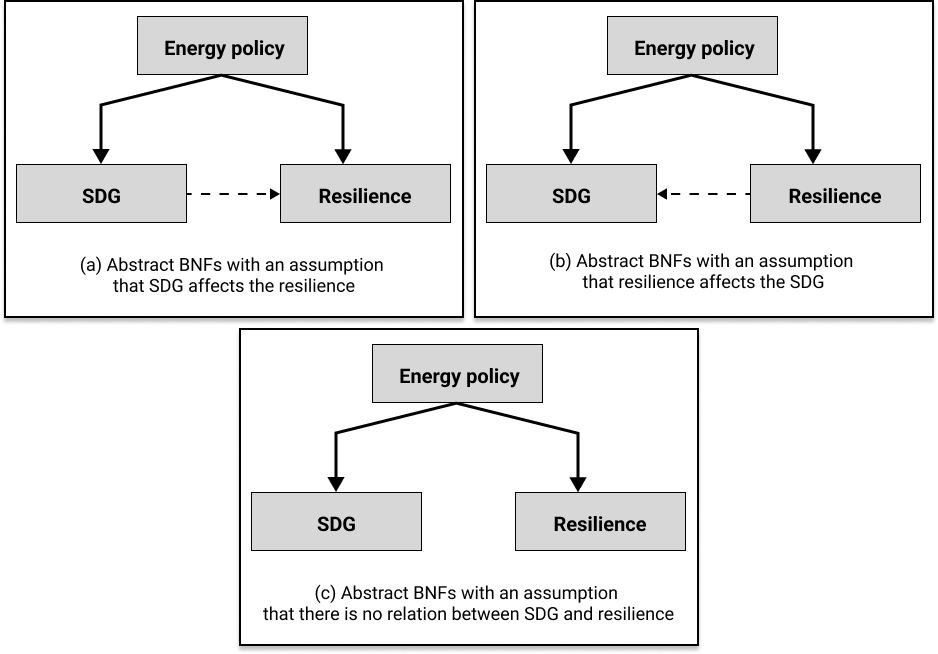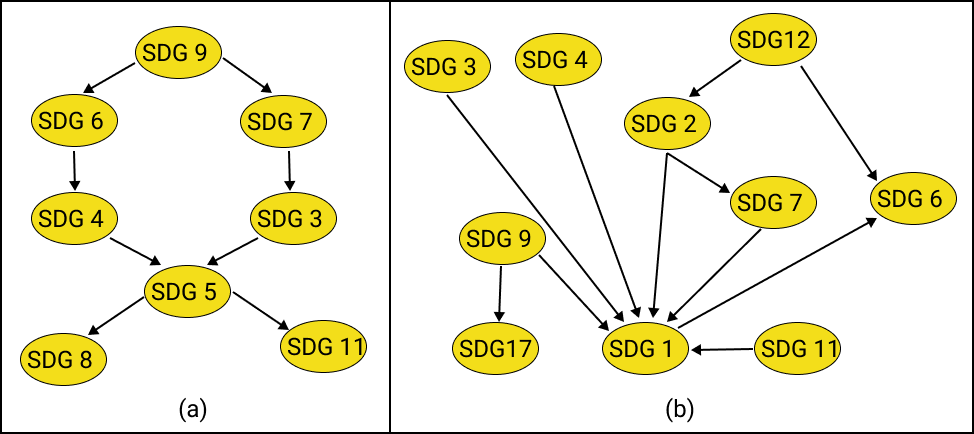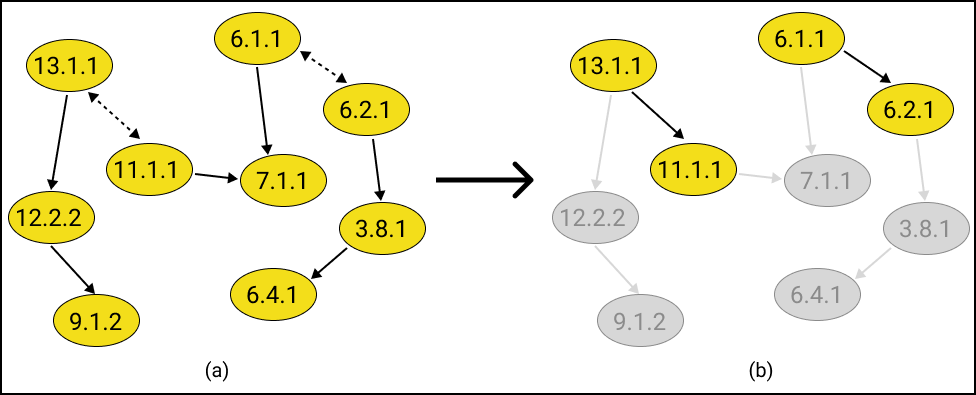Model assumptions statement
Version: 1.0.0
Pattern language family: Mod
Modeling phase:
1. Defining modeling goals
2. The conceptualization phase of system of interest
Modeling step:
1. Definition of the model purpose
2. Specification of the modeling context
3. Conceptualization of the system, specification of data and other prior knowledge
4. Selection of model features and family
Problem:
In order to describe a complex system, a series of simplifying assumptions need to be made by the modeler. In the case of OOBNs, these assumptions will directly affect the relationships between the different BNFs, the structure of each BNF, and the CPTs associated with each variable. How can these effects be revealed and considered by the model users?
Solution:
The relevant assumptions can be one of two cases:
-
The first case are assumptions related to the model conceptualization which mainly reflect the modeler’s understanding of the system to be modeled; let them be called assumptions Type-I.
-
The second case include the assumptions made during translating the conceptual model into a computational model; let this type be called assumptions Type-II.
Any of the assumptions made during model development, whether they are of Type-I or Type-II, should be explicitly stated as well as the effects they will have on the BNFs structure, as well as any effects they may have on the algorithms used for model inference.
Explicitly stating the model assumptions, particularly the ones that directly affect the model structure, contributes to clearly describing the thought process of the model developer and facilitates the modifying the model at later stages as well as testing these assumptions. For some domains, a set of assumptions will be repeated along different models and the model developer can benefit from the literature describing those common assumptions.
Type-I and Type-II assumptions are not to be confused with the statistical Type I and Type II errors (see [4] for more details about the statistical errors).
Structure: The solution proposed by this pattern have the following structure:
-
In an OOBN Type-I will mainly affect the model structure on both BNFs level and variable level, consider the following examples:
-
Example 1: Consider the same large network considered in the pattern "Large BN fragmentation". Such network aims at modeling how energy policy affects SDG progress and resilience against disasters. As there is no agreement among experts on the relationship between sustainability (represented in this case by the SDG) and resilience, that relationship can take one of three forms; a) achieving the SDG will affect the resilience, b) resilience is needed in order to achieve the SDG, and c) there is no relationship between the two. According to these three forms, the model can have the three possible structures appearing in parts a, b, and c in Fig.1. As the structure will change based on the modeler’s understanding, experience, or expert input, the assumption underlying the selected structure needs to explicitly stated.

Fig.1 Structure of the network changing based on the model assumptions.
- Example 2: For the same model mentioned in example 1, when the modeler tries to instantiate the SDG BNF, he/she will be faced by a design choice about which variables to include in the concrete BNF and how these variables relate to each other. As there are different views in literature on how SDGs are interlinked together, this can result in different SDG BNF instantiations with different structures. For instance, Fig.2 shows two structures based on two publications, (a) is driven from [1], and (b) is driven from [2]. As each BNF will yield different results when queried, the assumptions underlying each need to be explicitly stated

Fig.2 Two different views for the SDG BNF based on different understanding of the interlinkages between SDGs.
- Example 3: Clearly stating the model assumptions becomes very important in the cases where the model structure is inferred from data or when the model utilizes other systems’ models that allow cyclic behavior such as system dynamics. The following figure shows part of the network developed in [3] where they attempted to explore the relationships between the targets underlying SDG 6 and the other targets included in the 2030 Agenda by learning a BN structure from the available data. The resulting structure, however, contained some undirected links, which indicates that the relationship between the variables linked by undirected links can possibly go in both directions. As this type of relationship is illegal in BNs, the modeler needs to decide a direction for the link. Such decision will be based on some assumptions that need to be explicitly stated.

Fig.3 Undirected links resulting from structure learning algorithm in (a) need to be converted to directed links based on a set of assumption in (b).
- Type-II assumptions will mainly affect the algorithms and methods used for BNFs computations. For example, in the case of continues variable discretization, the chosen discretization method as well as the reasoning behind that choice needs to be clearly stated as this can have a considerable impact on the network performance and accuracy.
Constraints: NA
Related patterns:
Design choice and model quality:
- 1.R
- 4.U
Resources:
-
Zhang, Q., Prouty, C., Zimmerman, J. B., & Mihelcic, J. R. (2016). More than target 6.3: a systems approach to rethinking sustainable development goals in a resource-scarce world. Engineering, 2(4), 481-489.
-
Santika, W. G., Anisuzzaman, M., Bahri, P. A., Shafiullah, G. M., Rupf, G. V., & Urmee, T. (2019). From goals to joules: A quantitative approach of interlinkages between energy and the Sustainable Development Goals. Energy Research & Social Science, 50, 201-214.
-
Requejo-Castro, D., Giné-Garriga, R., & Pérez-Foguet, A. (2020). Data-driven Bayesian network modelling to explore the relationships between SDG 6 and the 2030 Agenda. Science of the total environment, 710, 136014.
-
Banerjee, A., Chitnis, U. B., Jadhav, S. L., Bhawalkar, J. S., & Chaudhury, S. (2009). Hypothesis testing, type I and type II errors. Industrial psychiatry journal, 18(2), 127.
-
Crout, N., Kokkonen, T., Jakeman, A. J., Norton, J. P., Newham, L. T. H., Anderson, R., … & Whitfield, P. (2008). Chapter two good modelling practice. Developments in Integrated Environmental Assessment, 3, 15-31.